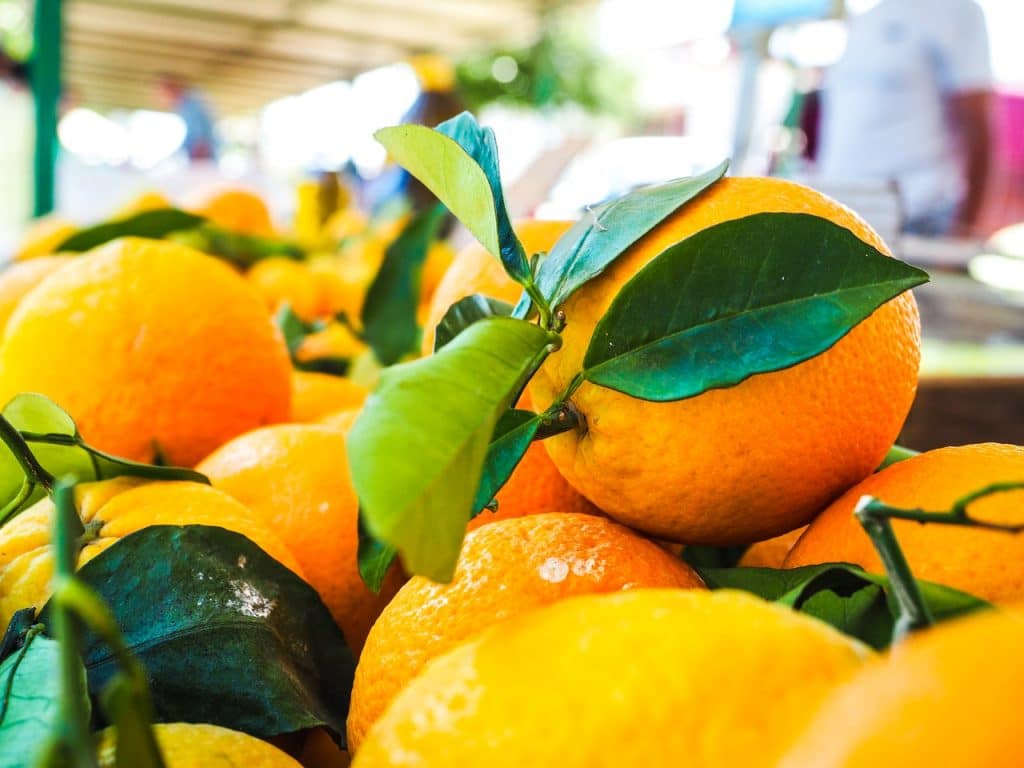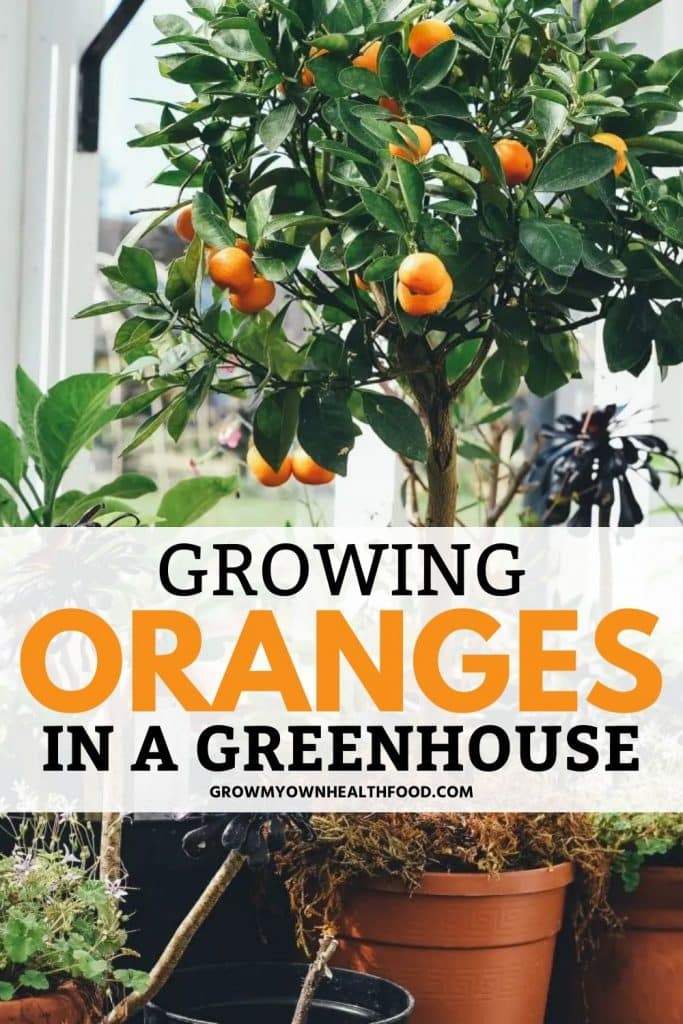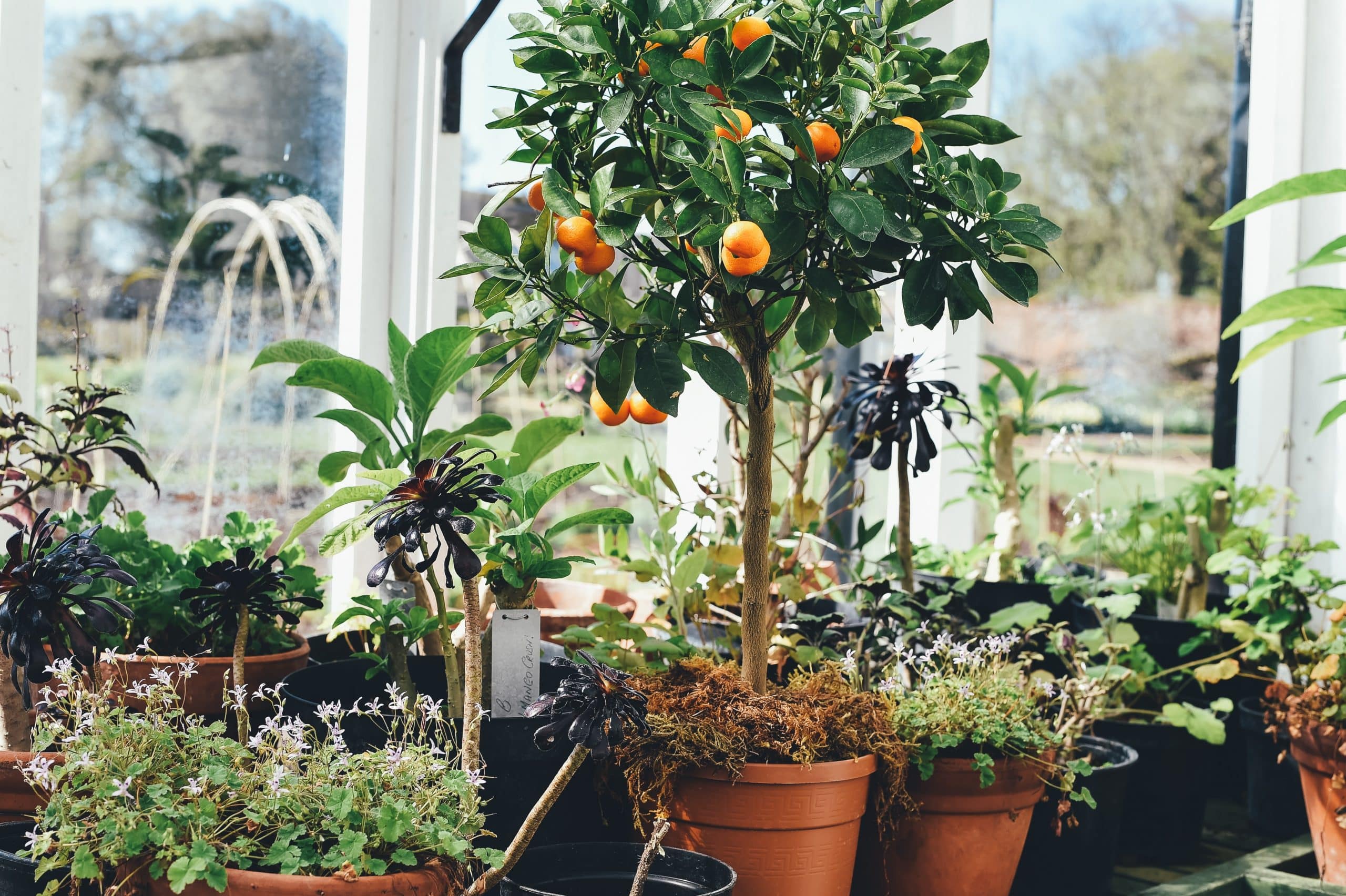Oranges are among the most commonly grown fruits in greenhouses as they can be quite easy to grow and provide you with the freshest possible fruit in the off-season. Plus, the taste of a fresh orange will always trump that of the one you will find in your supermarket. So, if you are planning on growing oranges in a greenhouse for the first time here are a few things that you need to keep in mind.
Choose the Right Variety of Oranges
Orange trees have many different varieties and you will have to figure out which one has the best chance of thriving in your region. New varieties keep popping up on a regular basis which can cause a lot of confusion for first-timers. So, it is best to ask a knowledgeable professional at the nursery to get a better idea of which types would be right for you if you are growing oranges in a greenhouse.
Regardless of which variety you go with, make sure you choose dwarf trees as they are best suited for a greenhouse environment as opposed to standard-sized trees. Even though the fruit is exactly the same, these trees take up a lot less space and are much easier to manage.
Select the Best Containers for Orange Plants
Selecting the right containers for your trees is very important as they determine how big your trees will eventually get. Look for high-quality containers that are at least 10 gallons. This will give your plants plenty of room to spread their roots and grow into manageable-sized healthy plants. Remember that orange plants tend to be top-heavy which is why they require a pot that is quite deep to balance out the weight.
- Sturdy Fabric Material: Made of 300g of thickened nonwoven fabric, these pots are moderately permeable, and BPA-free
- Great Drainage: Nonwoven fabric means the pots do not retain excess water, allowing your roots to breathe for healthier, more vigorous growth
- Durable, Reinforced Handles: While the competition uses flimsy handles that are merely strips of the same fabric the pot is made from, we use serger stitches to sew handles onto the pot so they can support a full bag of soil
Prices pulled from the Amazon Product Advertising API on:
Product prices and availability are accurate as of the date/time indicated and are subject to change. Any price and availability information displayed on [relevant Amazon Site(s), as applicable] at the time of purchase will apply to the purchase of this product.
Maintain the Right Temperature for Orange Plants
Start by buying the right greenhouse. Make sure it has a heavy cover that will help maintain optimum temperature during the winter months and keep down the cost and side windows that will help regulate external airflow and provide better air circulation. During the day the plants need the temperature to be above 70 Fahrenheit, whereas during the night the temperature must stay above 50 Fahrenheit, otherwise, the plants will start drooping.
- Warm yet Ventilated: With the zippered roll-up door and 2 Velcro side windows.
- Large space: Constructed with 12 wired shelves – 6 on each side, and measures 56.3” (L) x 55.5”(W) x 76.8”(H).
- Rock-solid Stability: Structured with heavy-duty rust-resistant tubes for extended durabili
Prices pulled from the Amazon Product Advertising API on:
Product prices and availability are accurate as of the date/time indicated and are subject to change. Any price and availability information displayed on [relevant Amazon Site(s), as applicable] at the time of purchase will apply to the purchase of this product.
Orange Tree Watering and Drainage
In order for your plants to thrive, you will need to make sure you water them properly. However, many people make the mistake of overwatering their plants which can end up causing different diseases. So, use pots that have a lot of drainage holes to make sure that the water doesn’t pool near the roots. Because orange trees don’t like wet feet. Another way to give your pots added drainage is to place them on drainage racks that keep the bottom of your pots from coming into direct contact with the ground, making sure the drainage holes don’t get blocked. Some gardeners also pack pebbles or peanuts at the bottom of the pot to accelerate the water drainage.
Use a potting mix manufactured specifically for container cultivation of citrus trees. It will make sure that the root system gets enough drainage. When you see the soil getting dry and the leaves start curling, water the plants to the top of the plant. You can reduce the watering during the winter season. The plants don’t need too much water during these months, however never let the soil get dried out completely.
- Help improve root efficiency and encourage nutrient uptake.
- Designed for container planting.
- Highly recommended for container gardens. Ready to use right out of the bag and is pH adjusted to allow for maximum nutrient upta
Prices pulled from the Amazon Product Advertising API on:
Product prices and availability are accurate as of the date/time indicated and are subject to change. Any price and availability information displayed on [relevant Amazon Site(s), as applicable] at the time of purchase will apply to the purchase of this product.
Fertilize Properly
For growing orange trees you need a water-soluble fertilizer with a high nitrogen concentration. It is best to use a time-release fertilizer while planting. Much easier than adding fertilizer to your plants regularly throughout the season.
- Miracle-Gro Performance Organics All Purpose Plant Nutrition feeds plants instantly
- Apply easily with the Miracle-Gro Performance Organics Garden Feeder or your watering can
- Enhanced with micronutrients to deliver high performance results
Prices pulled from the Amazon Product Advertising API on:
Product prices and availability are accurate as of the date/time indicated and are subject to change. Any price and availability information displayed on [relevant Amazon Site(s), as applicable] at the time of purchase will apply to the purchase of this product.
However, If you want to add fertilizer regularly throughout the season then make sure to fertilize the trees every week in spring and summer. Whereas, during the winter season fertilize only every two weeks and use a low-nitrogen fertilizer. If you notice the temperature going below 55 Fahrenheit during the winter season, it is a sign that you should stop adding more fertilizer.
Make sure you are using a fertilizer that is formulated specifically for growing orange trees. Remember to keep an eye out for any yellowing leaves throughout the season. It can be a sign of iron chelate deficiency.
Fight Pests and Disease
When growing oranges in the greenhouse, you need to be aware of different pests. Pests like whiteflies, leafminers, spider mites, aphids, and mealy bugs can potentially destroy your plants. However, if you use a high-quality sprayer to spray insecticidal soap on your plants you can easily keep most of these pests away from your plants. Some gardeners also realize beneficial insects like ladybugs in their greenhouses that take care of all the aphids and other pests.
- The sprayer can be easily adjusted to suit your needs.
- The heavy duty 24 oz (about 700 ml) sprayer bottle is chemically resistant to hold up against harsh chemicals and solvents.
- Our sprayer features a long lasting polypropylene spray head, tight and secure cap closure, internal cap gasket, 302 stainless steel spring.
Prices pulled from the Amazon Product Advertising API on:
Product prices and availability are accurate as of the date/time indicated and are subject to change. Any price and availability information displayed on [relevant Amazon Site(s), as applicable] at the time of purchase will apply to the purchase of this product.
One of the best ways to protect your plants from pests and diseases is to make sure your greenhouse always has optimum air circulation. Be sure the pots are not placed too closely together. If you plan on moving your plants outdoors during the summer season make sure to use insecticidal soap before bringing them back into the greenhouse. During the fall to make sure they don’t bring any pests with them. Also, keep pruning the trees as necessary and remove suckers that appear below the graft and water sprouts. This will help keep the plants healthy and shape them at the same time.
When to Harvest Oranges

If you are planting oranges for the first time you might have a hard time recognizing when your oranges are ripe and ready to be picked. Don’t harvest your oranges prematurely. They don’t tend to ripen after they have been picked unlike lemons and some other fruits. So, make sure they are completely ripe before you start harvesting.
The longer the fruit stays on the branches the more flavor it will have. Also, the sweeter and juicier it will be. You can tell when the oranges are ripe by checking their weight. Ripe oranges are generally heavier than non-ripe oranges. Moreover, ripe oranges are brightly colored and give a bit when pressed.
Here are some tools that you might need when growing orange trees in a greenhouse.
Growing Oranges in a Greenhouse – Conclusion
Citrus trees like oranges, lemons, and limes are some of the most commonly grown plants in greenhouses. Simply because they are quite easy to grow in greenhouse environments. Plus, they are known for not only providing fresh fruit but also providing intensely fragrant blossoms. If you follow the above-mentioned steps you too can start growing orange trees in a greenhouse.
Feature Photo by Annie Spratt on Unsplash












